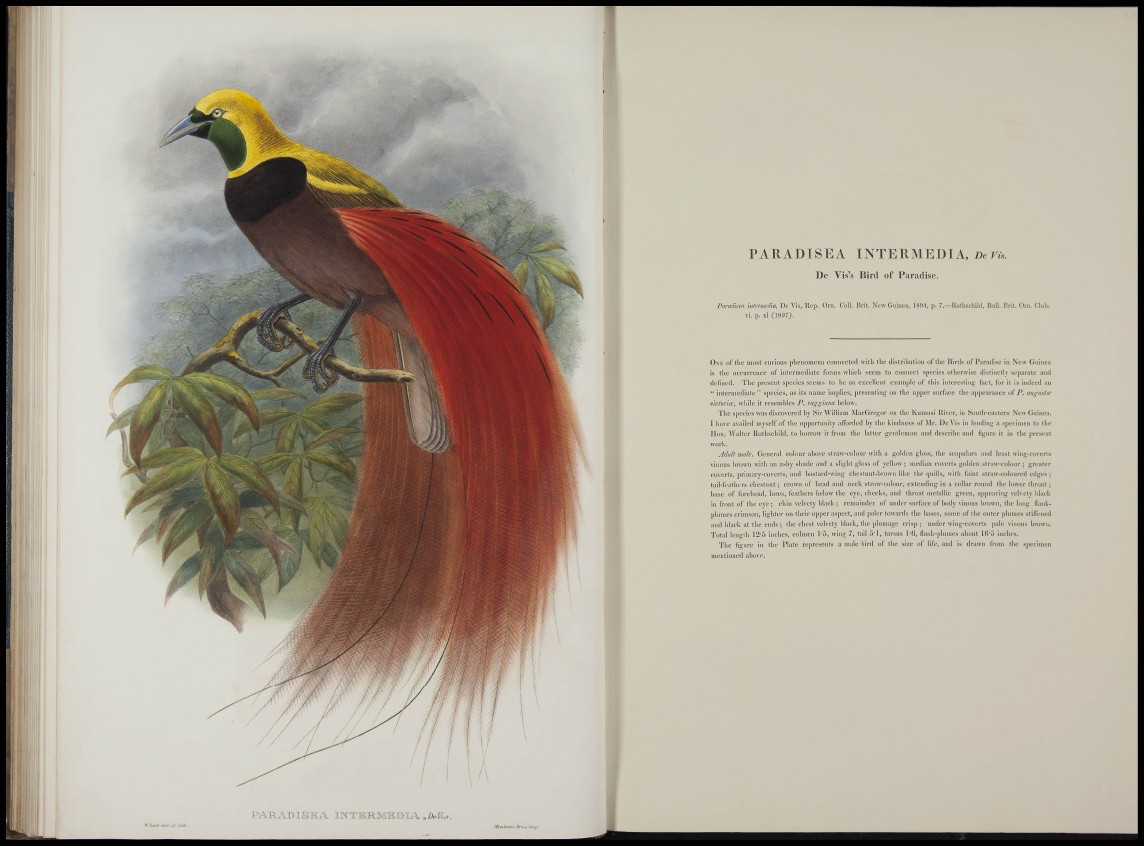
PARADISEA INTERMEDIA, Der/..
De Vis's Bird of Paradise,
Paradisea intermedia, De Vis, Rep. Orn. Coll. Brit. New Guinea, 18U4, p. 7.—Rotlisdiild, Bull. Brit. Orn. Club,
vi. p. xl (1897).
O.N'E of tlic most curious |)l]eiiomeua connected witli tlie distribution of the Birds of Paradise in Nciv Guinea
is tlie occurrence of intermediate forms wliicii seem to coimcct specics otherwise distinct!)' separate and
defined. The present species secnjs to be an excellent example of this interesting' fact, for it is irulced an
" intermediate" species, as its name inij)lies, presenlini^ on the uj)[)cr surfitce the api)earance of P. augmloi
victoria;, while it resembles P, ragg'iana below.
The species was discovered by Si r William MacGregor on the Kuniusi River, in South-eastern New Guinea.
I liave availed myself of the opportunity alforded by the kindness of Mr. De Vis in lending a specnnen to llie
Hon. AV'alter Rothschild, to borrow it from the latter gentleman and describe and figure it in the ¡¡resent
work.
Adult male. General colour above straw-colour with a golden gloss, the sca|)ulars and least wing-coverls
vinous brown with an ashy shade and a slight gloss of yellow; median coverts goldcji straw-colour; greater
covcrts, ])riuiarv-coverts, and bastard-wing ciiestiuit-brown like the quills, with faint straw-coloured edges ;
tail-feathers che.stnut; crown of head and ncck straw-colonr, extending in a collar round the lower throat;
base of forehead, lores, feathers below the eye, cheek.s, and throat metiillic green, apj)earing velvety black
in front of the eye ; chin velvety black ; remainder of under surface of body vinous brown, the long ilank-
¡thunes crimson, lighter on their upper asjiect, and paler towards ihe bases, some of the outer pinnies stiffened
and black at the ends ; the cliest velvety black, the plumage crisp ; under wing-covcrts pale vinous brown.
Total length 12-5 inches, cidmcii I'O, wing 7, tail 5-1, tarsus I'O, flank-plumes about IG'S Inches.
The figure in the I'late represents a male liird of the size of life, and is drawn from the specimen
mentioned above.